On 4 December 2014, the Natural History Museum unveiled the latest permanent addition to its public galleries – the almost complete skeleton of the iconic dinosaur Stegosaurus stenops.
We caught up with our dinosaur researcher Professor Paul Barrett to find out more.
This is a remarkably complete dinosaur fossil. How rare is such a discovery?
Of the dinosaur species that we know about, only about a fifth are known from essentially complete skeletons or lots of skeletons that overlap to give us an idea of the whole anatomy of the animal. Finding one as complete as this, where the only major parts missing are the left arm and base of the tail, is exceptional and it’s one of the only Stegosaurus in the world that’s anywhere near this complete. So it’s an amazing find and a really nice acquisition for the Natural History Museum.
How did the new dinosaur specimen come to be part of the collections we care for?
A colleague and I were attending the Tucson Gem and Mineral Fair in 2012 on behalf of the Museum when we spotted a life-sized cast of a Stegosaurus skeleton that had been unearthed in Wyoming, USA. Amazed by the specimen’s quality, we realised it would be an exciting addition to the Museum collections and would generate interesting new science. With the help of a group of generous donors the Museum was able to buy this special specimen.
Could you tell us more about why this Stegosaurus fossil is such an important find?
Although Stegosaurus has been known about for more than 130 years, not much is known about its biology. Because the new skeleton is almost complete, and three-dimensional, we can do a lot of things that have not been possible until now, such as looking at how the leg muscles work or how the skull functions during biting.
The last detailed study of Stegosaurus was done in 1914 so one of the first things we’re doing is re-describing this dinosaur on the basis of the new skeleton, so that all other stegosaur species around the world can be compared more closely with Stegosaurus.
Thanks to this fossil, we can begin to uncover the secrets behind the evolution and behaviour of this iconic but poorly understood dinosaur species.
Do we know whether the dinosaur was male or female?
Unfortunately not. It’s difficult to distinguish between male and female dinosaurs and there aren’t many cases where we’re absolutely convinced one way or the other.
To prove a dinosaur is female you need to find eggs inside the body, or a special kind of bone tissue that forms when the animal is preparing to lay eggs. If you do’t find either, the dinosaur may be male. But it could be a female dinosaur that simply wasn’t about to lay eggs.
Is there anything you’re keen to find out from the new specimen?
I’m particularly interested in how Stegosaurus fed. We know it was a herbivore but how did it use its small head to fuel its ample body? How hard could it bite? And what were the tiny teeth that line the jaws actually used for? They look like they would be fairly useless for chewing.
Because the bones in our specimen’s skull are separated from each other – rather than all stuck together like the Stegosaurus skull in the Smithsonian Institution – we can see how the skull fits together in 3D. We can then use this information to see how the skull would work as a chewing mechanism. It’s almost like playing with a Meccano set.
I also want to find out exactly how much this dinosaur weighed. Once you know the weight of a dinosaur you can start to see other interesting things like how much it would need to eat, how it moved and other aspects of its behaviour.
[Since we interviewed Paul, he and colleagues have published their research findings about this dinosaur’s weight in the journal Biology Letters.]
What were the distinctive bony plates used for? Can the new specimen help to resolve this common question?
Various ideas have been proposed for the function of the plates. Perhaps they were used to defend against attack by predators, or acted as giant radiators to help Stegosaurus lose and gain heat – or maybe they were simply used for display. We certainly plan to investigate this.
We will test whether the plates were strong enough to be used for defence. This involves taking a CT scan of the plate, turning it into a virtual 3D model, and breaking the model into thousands of blocks, like Lego bricks all joined together. Using values from modern animal bones, we tell the computer how strong the blocks are and it works out how that affects the overall strength of the bone. We can use that to calculate how much force it would take to bite through or snap the plate.
What do we know about the lifestyle of this dinosaur and the environment it lived in?
This Stegosaurus individual lived about 150 million years ago, during the Late Jurassic, in a fairly harsh and arid environment. Plants like cycads, ferns and horsetails formed the carpet – and this dinosaur’s food – and there would have been occasional conifer trees. It would have looked very different from today as there were no flowering plants or any grasses at that time in Earth’s history.
Stegosaurus shared the land with a lot of other famous dinosaurs. Giant sauropods like Diplodocus and Camarasaurus, smaller herbivores like Camptosaurus, and predators including Allosaurus and Ceratosaurus.
We know Stegosaurus didn’t live in herds, but was probably solitary or lived in small groups. These dinosaurs weren’t common, so if you were on a safari in the Late Jurassic of North America, they would have been an interesting spot.
Do we know how old this dinosaur was when it died?
We don’t know the dinosaur’s exact age, but we do know that it wasn’t an adult. As animals grow, the gaps between some of the bones close up. Some of those areas are still open in this dinosaur, showing it hadn’t yet reached full adulthood. The skeleton is just over 5.5 metres long, whereas other Stegosaurus specimens reach up to nine metres in length, so it still had a way to grow. But it wasn’t a baby by any means.
Do we know why it died?
No, we don’t. There’s no evidence on the skeleton that it was attacked or that its body was scavenged by another dinosaur. One of the toenails looks like it's been trodden on and infected but we’re fairly sure that this wouldn’t have been fatal because the rest of the skeleton is perfectly fine.
It’s possible that a disease killed this dinosaur or that for other reasons it might have starved to death. Those things wouldn’t necessarily leave any marks on the skeleton, so we can’t rule out either cause.
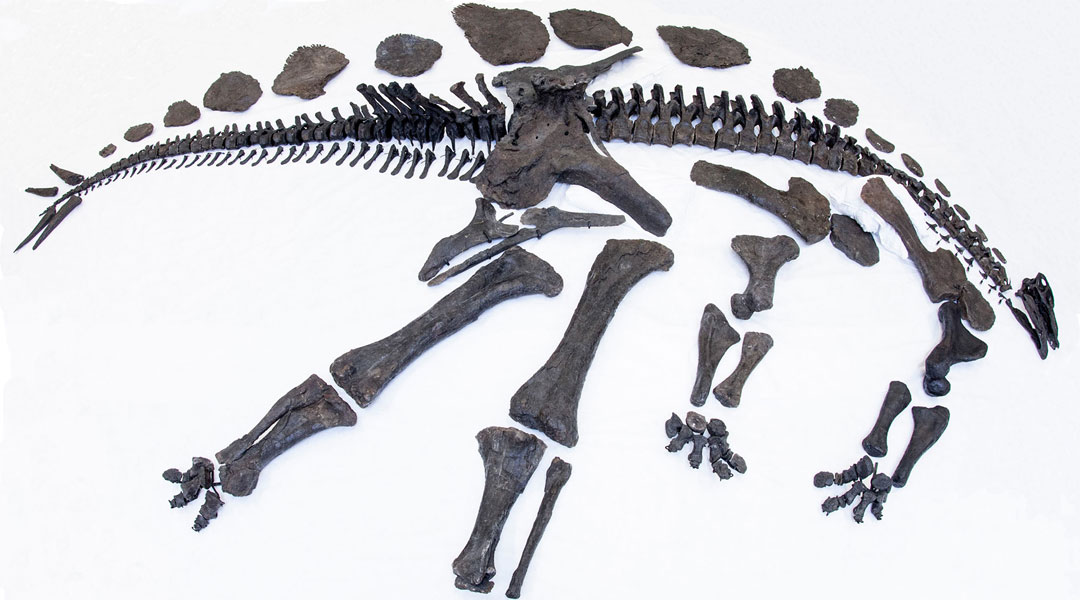
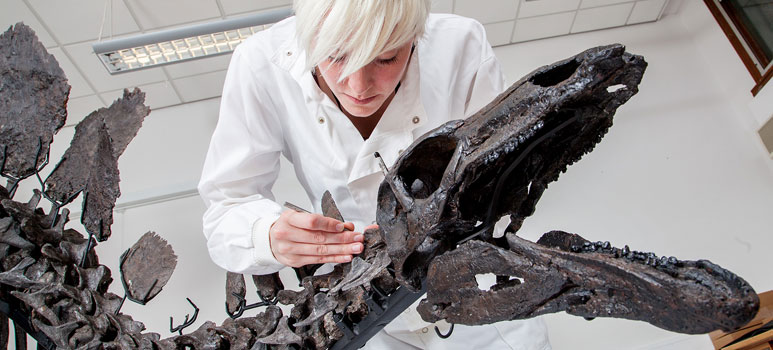
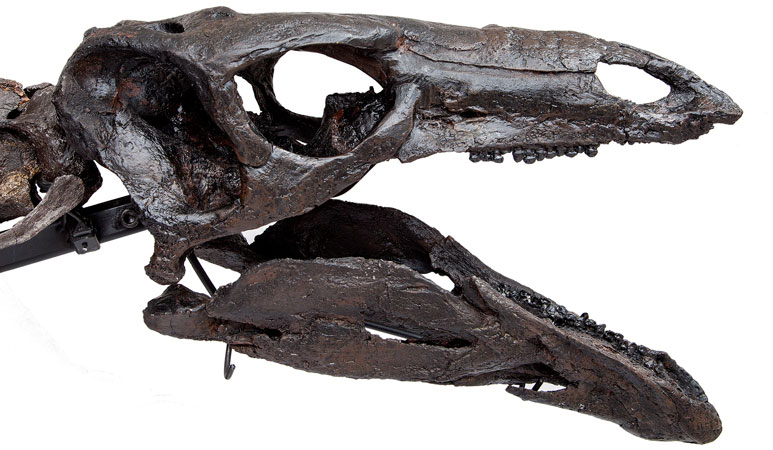
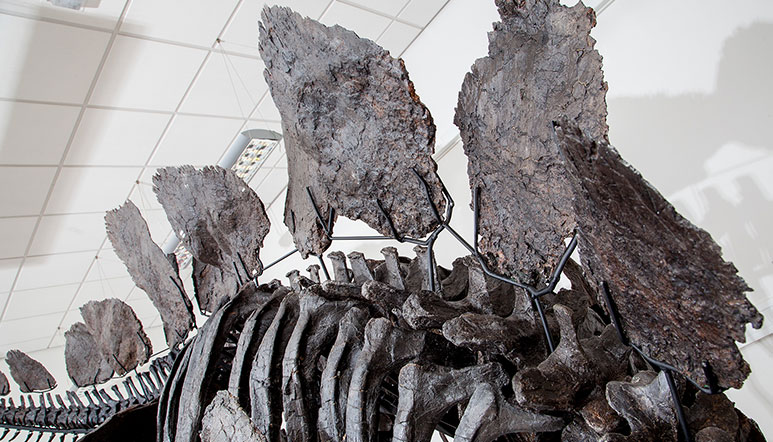
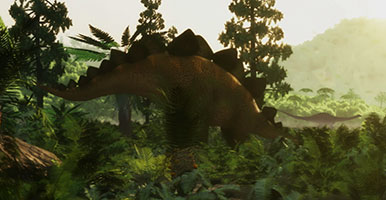

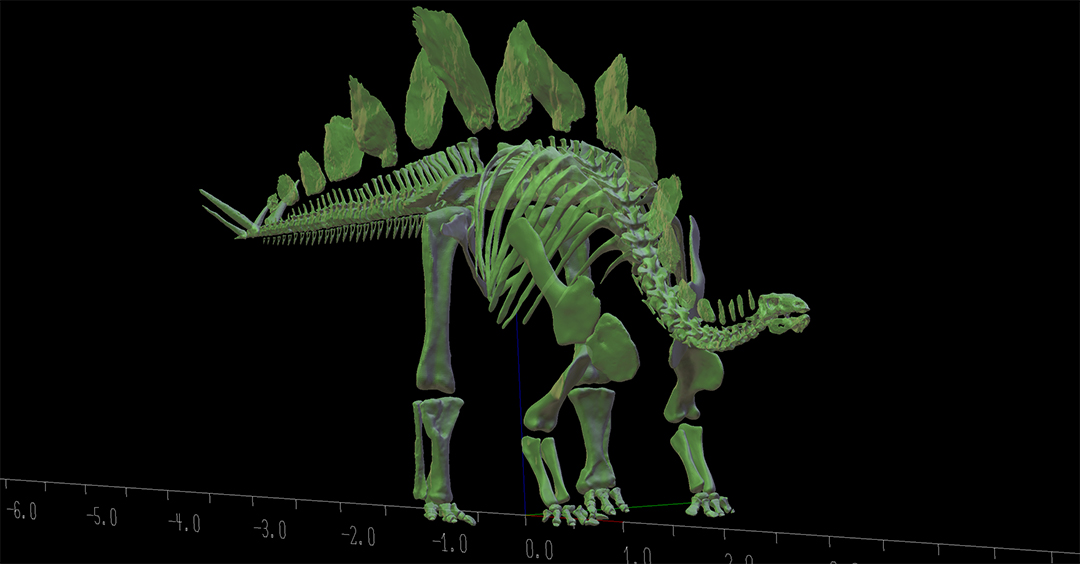
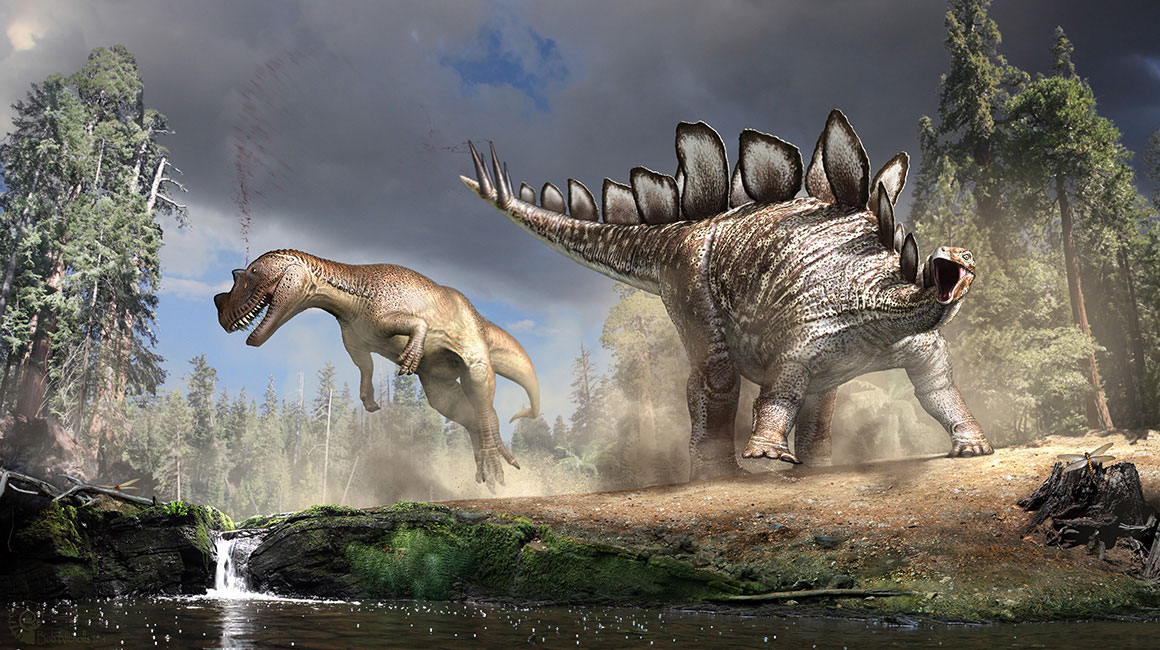

Don't miss a thing
Receive email updates about our news, science, exhibitions, events, products, services and fundraising activities. We may occasionally include third-party content from our corporate partners and other museums. We will not share your personal details with these third parties. You must be over the age of 13. Privacy notice.
Follow us on social media